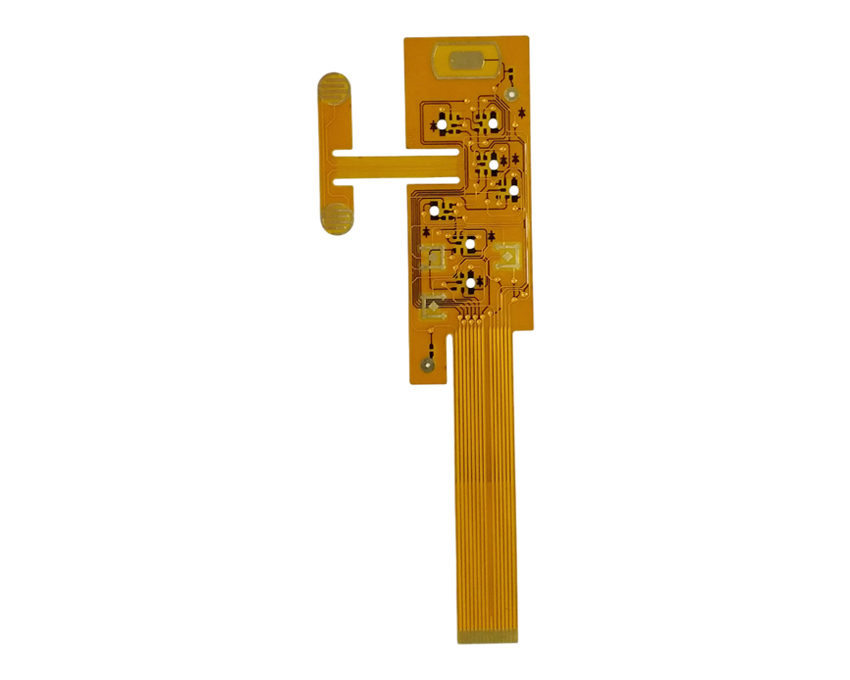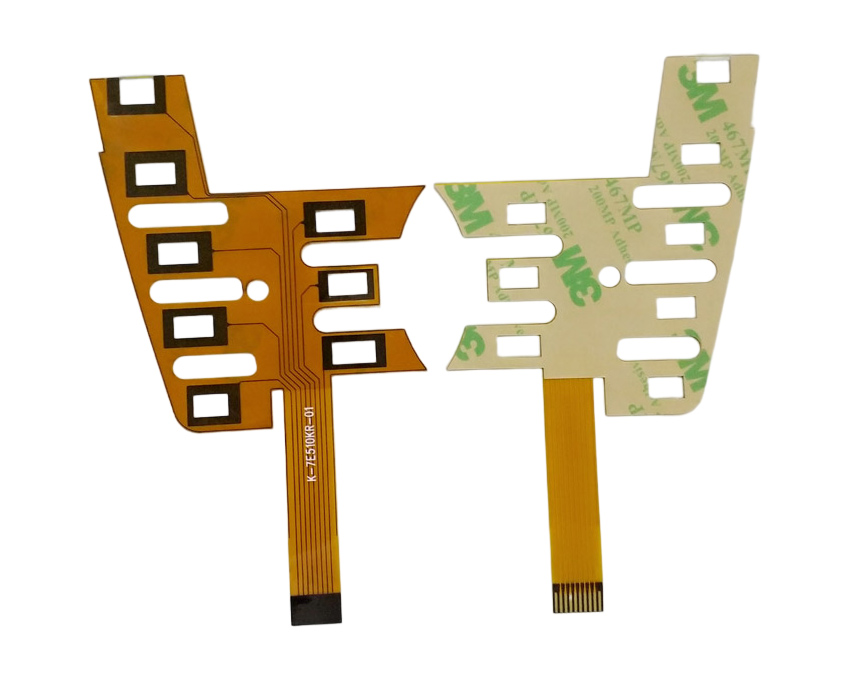Introduction
Flexible printed circuit boards (PCBs) are gaining popularity for their ability to bend and flex to fit into tight or moving spaces in electronic devices. As flexible PCB demand grows, so does the market for flexible PCB printers that can print these circuits quickly and accurately. This article will examine the top flexible PCB printers available in 2023 based on key factors like print resolution, materials, speed, and cost. With the right printer, engineers and hobbyists can prototype and produce flexible PCBs with more complex designs than ever before.
What to Look for in a Flexible PCB Printer

When evaluating flexible PCB printers, there are several key specifications and features to consider:
Print Resolution
Higher resolution equates to finer details and thinner printable traces. Most flexible PCB printers have a resolution between 50 and 100 microns. The best printers boast resolutions as fine as 10 microns for incredibly detailed and compact circuits.
Print Speed
Faster print speeds allow more flexible PCBs to be produced in less time. Print speeds range from 10 to 200mm/second, with 50-100mm/second being typical.
Print Materials
The printer must support flexible PCB materials like polyimide or PET. Conductive inks are usually silver, carbon, or nanoparticle based.
Print Bed Size
The maximum print area ranges from A4/Letter size up to 210 x 297mm or 8.5 x 11 inches for desktop models. Larger industrial printers support bigger print beds.
Print Registration Accuracy
Registration accuracy ensures proper alignment when printing over multiple layers. Accuracy within +/- 50 microns is ideal.
Software
Easy to use software interfaces simplify preparing and printing designs. Support for major CAD programs is ideal.
Connectivity
Flexible PCB printers should have USB, WiFi, and/or Ethernet connectivity for sending designs.
Cost
Desktop flexible PCB printers range from $3,000 to $20,000. Industrial printers cost $50,000+. Cost is a balance of print quality and features.
Best Flexible PCB Printers
With an overview of key specifications and features, here are the top flexible PCB printers available in 2023:
Voltera V-One
The Voltera V-One is one of the most compact and accessible desktop flexible PCB printers.
- Resolution: 100 microns
- Print Speed: 50mm/s
- Print Bed: 210mm x 147mm
- Materials: Polyimide, silver & carbon conductive inks
- Accuracy: +/- 50 microns
- Software: Voltera software, exports Gerbers
- Connectivity: USB, WiFi
- Cost: $3,499
The V-One is easy to use out of the box and perfect for prototyping simple flex circuits with its integrated cleaner, dryer and curing oven.
Nano Dimension DragonFly LDM
The DragonFly LDM by Nano Dimension is a precision printer for complex flexible PCBs.
- Resolution: 1 micron
- Print Speed: 200mm/s
- Print Bed: 210mm x 315mm
- Materials: Proprietary nanoparticle inks
- Accuracy: +/- 50 microns
- Software: Parametric CAD
- Connectivity: LAN, WLAN
- Cost: $399,000
With micron resolution, the DragonFly LDM can print multi-layer circuits with incredibly fine details and stacking accuracy. The integrated inkjet printer swaps materials on the fly. Ideal for demanding printing jobs.
BotFactory Squink
This compact printer from BotFactory is affordable and versatile.
- Resolution: 50 microns
- Print Speed: 100mm/s
- Print Bed: 200mm x 200mm
- Materials: Silver, carbon, & dielectric inks
- Accuracy: +/- 100 microns
- Software: BotFactory PCB editor
- Connectivity: USB, WiFi, LAN
- Cost: $9,999
The Squink supports a wide range of materials and can print on both rigid and flexible substrates. Easy to set up and suitable for most prototyping applications.
PCBway Fast Flexible Circuits Printer
This printer from flexible PCB manufacturer PCBway provides fast and accurate printing ideal for production.
- Resolution: 15 microns
- Print Speed: 150mm/s
- Print Bed: 406mm x 305mm
- Materials: Silver & carbon inks
- Accuracy: +/- 10 microns
- Software: Takes Gerber files
- Connectivity: USB, WiFi, LAN
- Cost: $19,500
With excellent registration accuracy and fast print speeds, the PCBway printer is a great option for taking projects from prototype to production. Large print area handles multiple circuits.
MGI Meteor DP60
The MGI Meteor DP60 is an advanced industrial printer for high volume, professional-grade flex circuit fabrication.
- Resolution: 15 microns
- Print Speed: 600mm/s
- Print Bed: 406mm x 330mm
- Materials: Proprietary polymer & nanoparticle inks
- Accuracy: +/- 5 microns
- Software: MGI design software
- Connectivity: LAN
- Cost: $200,000+
With exceptional precision, incredibly fast speeds, and ability to scale to mass production, the Meteor DP60 produces flexible PCBs comparable to lithography-based methods. Ideal for manufacturing operations.
Flexible PCB Printing Costs

The primary costs associated with desktop flexible PCB printing:
- Printer purchase price – $3,000 to $20,000 for desktop models.
- Printer maintenance & repairs
- Conductive & dielectric ink cartridges – $200-$500 per cartridge
- Flexible substrate materials like polyimide or PET film
Printing costs are very low, in the pennies per square inch. So once the printer investment is made, each additional print is inexpensive compared to outsourcing flex PCB fabrication.
For industrial printers in manufacturing, expect lease fees of $5,000-$10,000 per month.
Flexible PCB Printing Use Cases
Flexible PCB printers enable rapid in-house prototyping and production of circuits for:
- Wearable devices – watches, fitness trackers, health monitors
- Internet of Things products – sensors, transmitters, antennas
- Robotics & drones – limbs, joints, controllers
- Automotive electronics – circuits for tight spaces
- Medical devices – implanted circuits, sensors
- Aerospace & defense – soldier systems, guidance systems
Any application where traditional rigid PCBs won’t fit the mechanical requirements can benefit from flex PCB printing.
Conclusion
Flexible PCB printers are revolutionizing the design and fabrication of advanced circuits. With the latest printers offering incredibly high prints resolution down to 1 micron, fast print speeds up to 600mm/s, and accuracy measured in microns, even the most demanding flex PCB projects can be realized. While industrial printers still dominate manufacturing, accessible desktop printers gives engineers and entrepreneurs a way to take their products from concept to prototype to production all in-house. As printer technology continues advancing, we can expect more of our future electronics to contain intricately printed and flexible circuits.
Flexible PCB Printing Frequently Asked Questions
What materials are used in flexible PCB printers?
Flexible PCB printers use special inks containing conductive materials like silver, carbon, and other nanoparticles to print the circuit traces. Dielectric inks are used to print insulating layers. The substrates are flexible material like polyimide or PET film.
How accurate are flexible PCB printers?
The best flexible PCB printers achieve accuracy within +/- 5 to 50 microns for layer-to-layer registration. This allows printing complex multilayer circuits.
Can you print rigid and flex PCBs on the same printer?
Some flexible PCB printers support printing on both flexible substrates and rigid materials like FR4. This allows creating a hybrid rigid-flex circuit on a single printer.
What design software do you need for flexible PCB printing?
Most printers include their own software for preparing designs or work with common CAD and EDA programs. Gerber files are commonly accepted.
How long does it take to print a flexible PCB?
Print speeds from 50 to 600 mm/s allow printing a 6″x6″ flexible PCB in 5-20 minutes. Larger or multilayer boards take longer. Curing and drying time must also be factored in






Leave a Reply